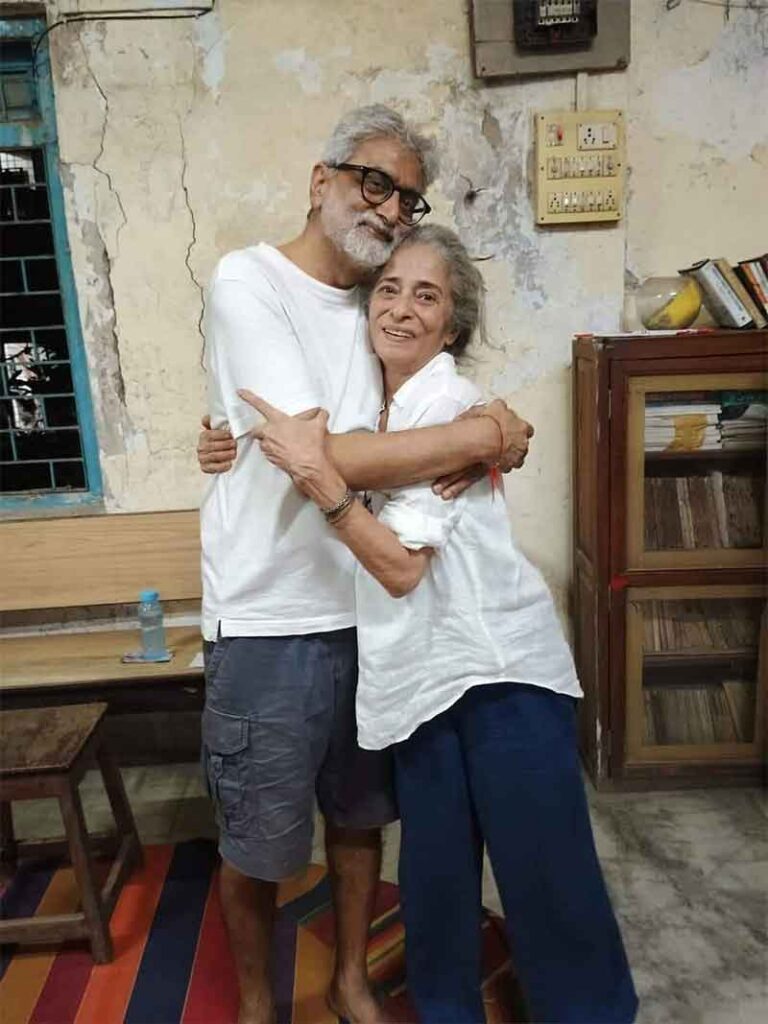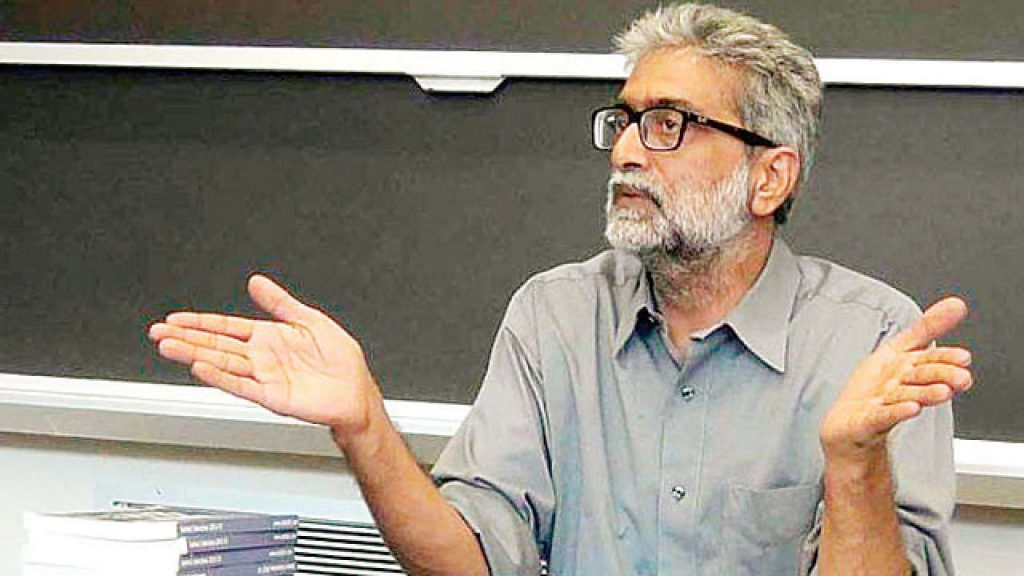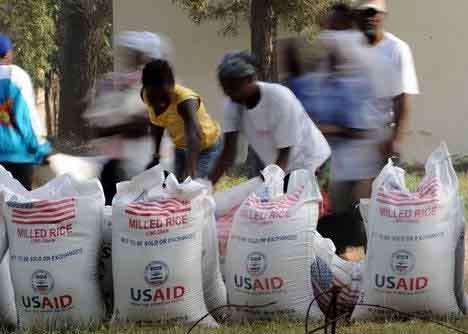
Hindutva fascism grew and rose to power by abusing the facilities of formal democracy, spreading hatred under the guise of freedom of speech.
The Bhima Koregaon case and the arrests and imprisonment of human rights activists under the UAPA Act, which critics point out as an example of human rights violations stretching back to the two terms of the Narendra Modi government, have drawn much attention internationally. Moreover, it became notorious as a sign of the government’s reactionary approach to democratic rights, intolerance of dissident voices, and an attempt to terrorise civic life.
The accused in the Bhima Koregaon case, nicknamed ‘BK-16’, English professor Shoma Sen of Nagpur University, has been granted bail by the High Court on April 5, 2024, after serving six years in jail. Granting bail, Justices Aniruddha Bose and A.J. Masih also said in the order that the evidence submitted by the National Investigative Agency (NIA) under the UAPA Act was not credible.
Shoma Sen was arrested from her home on June 6, 2018. Sixteen people were arrested in the Bhima Koregaon case. Pune police arrested nine people in 2018. All seven people were arrested after the NIA took over the investigation in 2020. Prominent lawyers, activists and academics were arrested. They were initially arrested on charges of being members of the banned Communist Party of India (Maoist) and promoting Maoist activities. He was also accused of being involved in a conspiracy to assassinate the Prime Minister. It is said in the charge sheet that evidence was obtained from their laptops for this.
Among the accused in the Bhima Koregaon case, Jesuit priest Stan Swamy, aged 84, died in custody. Other defendants include poet and revolutionary P. Varavara Rao, who was granted bail. Sudha Bharadwaj, Anand Teltumbde, Vernon Gonsalves and Arun Ferreira were granted bail due to lack of evidence. The Bombay High Court granted the accused Mahesh Raut bail in September 2023. Activist and EPW editorial board member Gautam Navlakha was recently granted bail by the Supreme Court. All those who have been granted bail are under police surveillance as part of legal proceedings.
Activists Rona Wilson, Sudhir Dhawale, lawyer Surendra Gadling, Delhi University English department associate professor Hany Babu, and cultural activists Sagar Gorkhe and Ramesh Gaichor remain in jail without bail.
The accused in the Bhima Koregaon case were sought after the activists who were fighting for the rights of the oppressed class in different parts of India legally and using democratic methods. The facts that have emerged showing that the Bhima Koregaon case is a police story by bringing together people who have no relation to each other, just like the plot of the popular web series ‘Paatal Lok’
Anthropologist and author Alpa Shah’s investigative book ‘The Incarceration: Bhima Koregaon and the Search for Democracy in India’ sheds light on the nuances of the fabricated BK-16 case.
The fake narrative of urban Naxals has been created in the first place and attempts have been made to implicate those accused in that string. Urban Naxal is a term used to refer to dissident voices rising against Hindutva totalitarianism after Narendra Modi came to power in 2014 and those uniting with tribals fighting against corporate resource exploitation.
In India, which Prime Minister Narendra Modi describes as the ‘mother of democracy’, democratic rights are being attacked in the most heinous way. Alpa Shah’s factual study and analysis also investigates the causes of the erosion of democracy in India over the last ten years.
Bhima Koregaon – Elgar Parishad
The Bhima Koregaon (BK) case occurred on January 1, 2018. ‘Martyr’s Day’ is celebrated every year by the Dalit people near the Victory Pillar located in the Koregaon village on the banks of the Bhima River, in Maharashtra. This ceremony is held to commemorate the ancestors who died fighting against the Peshwa rule in 1888. The Dalit community of Maharashtra sees the battle against the Peshwa Raj in Bhima Koregaon as a famous struggle by the Kishor community against the upper caste system. The Dalit people are proud to have fought alongside the British government against the casteist Peshwa rule. Mahars joined the British army. It is a historical fact that the Peshwa rule collapsed after this fight. After winning the battle, the obelisk was planted, cementing the pride moment in the popular memory.
On January 1, 1927, Mahar people gathered near this stupa. Ambedkar addressed the gathering and mooted the idea of holding a similar gathering every year.
In 2018, around 6 lakh people from Dalit communities were expected to participate in the commemoration program. But the commemoration event was marred by militant right-wing activists. The riot was ignited by a crowd on motorbikes waving saffron flags.
The first police action identified two Maratha frontline caste leaders – Sambhaji Bhide and Milind Ekbote – as the masterminds behind the riots. Devotees respectfully call Sambhaji as Guruji. Milind Ekbote is a saffron politician. He has also been involved in riot cases before. He holds the leadership position of cow protection vigilante groups. After Pune City Police took over the case from Rural Police, it was quickly rewritten and Milind Ekbote and Sambhaji were initially omitted. The case now centres on a war to overthrow the government and a plot to assassinate the prime minister, according to a rewritten version of the story. A case was being made by connecting all of them under the garb of Urban Naxals.
In April 2018, Rona Wilson, a doctoral student at JNU, was arrested first. The new case was that the Bhima- Koregaon riots were planned in the Elgar Parishad on December 31, 2017. It was alleged that the Maoists had pulled the strings of the Elgar Parishad. Seven months after Rona Wilson’s arrest, Surendra Gadling, Mahesh Raut and Shoma Sen were also arrested. Urban Naxalism is the alleged crime.
Alpa Shah describes in detail what happened in Elgar Parishad. Justice Sawant, who was a judge of the Maharashtra High Court, was the main organiser of it. Justice Kosle Patil, retired from the Maharashtra High Court, is also one of the organisers. On the day of the Elgar Parishad, Justice Sawant was not present as he fell ill. Dalit organisations from Maharashtra participated in the Elgar Parishad. The program was also intended to counter the encroaching Hindutva right wing. Jignesh Mevani and Radhika Vemula were also present. Kabir Kala Manch organised programs as part of this.
Sagar Gorkhe and Ramesh Gaichor from the Dalit community worked in the Jyoti Jagatap Kabir Kala Manch. They were also arrested as accused in the case. The case was made by joining the unrelated Elgar Parishad program and the Bhima Koregaon commemoration. Then those who protested against it and wrote articles in the media were arrested along with the accused.
In July 2018, a month before he was named an accused in the Bhima Koregaon case, the Jharkhand government had booked Stan Swamy along with 19 others for sedition. An FIR was registered against Stan Swamy for supporting the declaration of tribals as an autonomous region under the PESA Act. Almost a month later, in August, the police surrounded Bageicha, where Stan Swamy lived in Jharkhand. The police recovered the mobile phone and some CDs from there. Mihir Desai, who represents the accused in the court, told Alpa Shah that Stan Swamy immediately contacted Mihir Desai. Stan Swamy told Mihir Desai that some policemen have come to him from Maharashtra, and they are investigating the Bhima Koregaon case. Stan Swamy called Mihir Desai to inquire what Bhima Koregaon was. This shows that Stan Swamy does not know what Bhima Koregaon is. In this case, people who worked unitedly in the protection of tribal and Dalit rights and human rights struggles in different parts of India are arrested at each stage. A case was being made by connecting all of them.
Why BK-16?
One aspect that Alpa Shah’s book elaborates on is why those fighting against the upliftment and disenfranchisement of tribal people in the states of India have been accused in the same case. The relationship between them is unclear.
Mining corporations have to uproot tribals to extract minerals from tribal areas. The omnipotence of the state is also used for that. Governments have been there to help corporates exploit resources and keep tribals in the throes of fear. However, dealing with tribal resistance is not easy in practice. The human rights organisations are fighting the legal battle for the tribals. To break this, the respective governments have reached the solution of making a fake case against those who are active in the tribal area and those who are influential in shoring up support for tribals. The strategy adopted by the respective governments to protect the interests of the corporations is to kill the Maoists through simultaneous encounter killings, spreading fear in the tribal areas and sending the human rights activists to jail.
Sudha Bharadwaj, Stan Swamy and Mahesh Raut are working in the tribal sector at different levels in different places in central India. Sudha Bharadwaj’s history of political activity is described in detail by Alpa Shah. Sudha renounced her American citizenship and became active in trade union activities in the tribal areas of Chhattisgarh. Sudha trade union comes to the scene as an activist of Shankar Guha Niyogi’s Chhattisgarh Mukti Morcha. She became fascinated with the work of Shankar Guha Niyogi while studying at IIT Kanpur. They stood firm with the miners even in the insecurity that followed the killing of Shankar Niyogi by the mining mafia. Later she became a lawyer. They took up workers’ cases. Their collusion with the state has been exposed by questioning the human rights abuses of India’s most powerful elites in court. This has become a huge fatigue for the government and corporates. With that, the enemies with money and power were ready to settle accounts with Sudha.
Stan Swamy’s efforts to empower tribals in Jharkhand prompted the government to label this Jesuit priest as an urban Naxal and imprison him. Alpa Shah writes: “The motive behind the targeting of Sudha Bhardwaj and Stan Swamy was to silence social movements and human rights activists protecting the tribal people and their forest rights. Dalit minority bio-intellectuals and human rights activists were framed in the case to destroy another minority fighting against the Hindu right”.
According to Alpa Shah, the primary reason why Gautam Navlakha became an enemy of the regime was that he responded and wrote about the human rights violations committed by the Indian regime in Kashmir. Anand Teltumbde was mainly concerned with providing theoretical and conceptual direction to the Ambedkar movements during the Hindutva regime. Anand, also a professor of management, opened the way for new theoretical advances in praxis by connecting critical sociology with the rights struggles of oppressed people through his column ‘Margin Speak’ written in EPW. The allegation was that Anand’s brother Milind Teltumbde was leading the Maoist activities in the Gadchiroli tribal region of Maharashtra. Milind was killed in a Maoist hunt in Gadchiroli.
Alpa Shah talks about the Gadchiroli Maoist hunt. Let me mention one more recent incident. During the recent Lok Sabha elections in the tribal region of Bastar, Maoists were massacred in encounters in the Bastar region, and there was total silence everywhere. Except for former Chhattisgarh Chief Minister Baghel, no political party was ready to respond. Communist parties, which have narrowed down to regional parties, do not pay attention to national or international events except for the vote bank.
Hany Babu, associate professor of English at Delhi University, is the latest person to be linked to BK-16 for alleged Maoist links. Alpa Shah’s chapter in his book explaining Hany Babu’s arrest is titled ‘Curios Case of a Delhi University Professor’.
There was apparently nothing to connect Hany Babu with Elgar Parishad and Bhima Koregaon. Hany Babu adopted a pro-Dalit perspective in his academic field of linguistic research. He was also active in the release of G.N Sai Baba. During Hany Babu’s arrest, the police also took away the laptop he was using. Serious information has come out through the media that Hany Babu’s laptop was hacked and whatever was needed as ‘evidence’ was planted. The covert activities of the surveillance regime are clear in framing. Alpa Shah reveals many alarming facts about the terrible workings of the surveillance state.
Software Invasion and Evidence Planting
The Guardian and the Washington Post reported that Rona Wilson’s laptop was under the control of spy software before foreign media revealed that documents ‘discovered’ from Stan Swamy’s computer had been inserted into the computer drive. Even though there is no specific charge against Hany Babu, Hany Babu is being added as an accused in the case to provide evidence against Rona Whitson. The NIA is considering the letter ‘found’ from Hany Babu’s laptop as the reason for the charge sheet. Hany Babu’s laptop was also hacked, and ‘evidence’ was planted. The most important part of Alpa Shah’s book is the expert’s explanation of how the spy software was inserted into the laptop. Experts share information that scares and surprises us at the same time.
Alpa Shah narrates on the facts that the totally mysterious operation of inserting ‘evidence’ into laptops was carried out with the knowledge of the police using hacker gangs for payment.
It has been reported that the Israeli spy software ‘Pegasus’ was purchased by the central government and the mobile phones of prominent media persons, political leaders and activists were subjected to surveillance using the Pegasus software. Then, on the instructions of the Supreme Court, an inquiry team was appointed. The central government’s use of Pegasus software is still shrouded in mystery.
Alpa Shah recounts on the facts that a similarly shady practice of using paid hacker gangs to insert ‘evidence’ into laptops was carried out with the knowledge of the police. The hacker gangs who work like mercenary gangs on a global scale are described in detail.
The most important part of Alpa Shah’s book is the expert’s explanation of how the spy software was inserted into the laptop. Experts share information that scares and surprises us at the same time.
Alpa Shah writes about the invasive nature of Pegasus spyware: “Like computer hacking, if a phone is infected with Pegasus spyware, attackers can intercept conversations, read texts, track a person’s location, collect any data from it, control the recorder and camera, eavesdrop on the phone and use it as a video recording device. Never click on any message. It is possible to hack into the phone without doing it and without picking up the incoming call and will never know that the phone has been hacked.”
Alpa Shah also gives shocking information about the technical connection between Rona Wilson’s laptop hacked and the Pune Police. Alpa Shah reports on computer intrusions based on investigative reports by cybersecurity experts at Johns Hopkins University. The book reveals information about the hacker group ‘Modified Elephant’:
1. Rona’s account was identified as ‘Modified Elephant’, a hacker group accessed from the same IP address and not by him.
2. In April 2018 After his laptop was seized by the Pune city police, before he was arrested the following month, Rona’s email address was sent phishing emails with malware from the hacker group Modified Elephant’s IP 3.
The important thing is that when the police seized Rona’s laptop, the e-mail address and phone number of Rona were added as the recovery address of the hacker group named Modified Elephant whoever changed it was the same person who sent the phishing mails. This indicates a direct link between the Pune City Police and the hacker group.”
It is worrisome that the government is not only prying into citizens’ privacy but also tracking and controlling their digital lives by tracking and capturing information and illegally embedding information into digital devices. As Alpa Shah notes in the book, the Bhima Koregaon case’s investigation of the prisoners led them to extensive software espionage by the regimes. What is the Indian government’s relationship with the mercenary hacker group ‘Modified Elephant’ will never be revealed. This relationship may have evolved to new heights. However, the investigation reveals a new area of cyber warfare against civilians. Cyber surveillance is heading in a very dangerous direction. Paid government espionage by clandestine hacker groups operating on a global scale has put free and spontaneous digital communication at risk in the first place.
It is worrisome that the government is not only prying into citizens’ privacy but also scrutinizing and controlling their digital lives.
The fact that digital devices may be under the control of the government or another cyber-criminal group is of great concern. This reveals the fact that no one is safe in a political system that has no sympathy for democracy and human rights and sees human rights as treason. At the heart of the BK-16 case, as Alpa Shah points out, is the state’s digital invasion.
A plot to assassinate the Prime Minister?
The Pune police are raising the argument that all of them were linked in the secret plan to assassinate Prime Minister Narendra Modi in order to implicate the accused and arrested in the Bhima Koregaon case and strengthen the case against them. While plotting to assassinate the Prime Minister is as serious a crime as declaring war against the country, the NIA can imprison them for any length of time under the UAPA. Not only will it not be easy to get bail after being accused and jailed, but the legal process itself will become a big punishment.
Republic Channel’s Arnab Goswami created a series of narratives repeating the findings of the Pune police about the plot to assassinate the Prime Minister, routinely hailing it as ‘super exclusive news’. Immediately after, all the ‘Godhi media’ justified the arrests by claiming that they had found ‘objective evidence’. The story is based on information ‘discovered’ from computers and laptops.
Aam Aadmi Party has also been given the term Urban Naxal by Union Home Minister Amit Shah in recent days. This is also an indication of the manner in which the Aam Aadmi workers are going to be targeted if the BJP comes to power after the elections.
The plan to assassinate the Prime Minister is mentioned in the second paragraph of the letter addressed to Maoist leader Comrade Prakash. Comrade Prakash’s letter mentions that the anti-tribal approaches of Narendra Modi should be opposed and the Modi government which is destroying the Maoist party and eliminating the disobedient voices should be retaliated against and this should create an incident like that of Rajiv Gandhi. The letter also calls for targeting Narendra Modi’s roadshows for this. The key question is whether the letter was forged. It has already been suggested that it may have been artificially created. Experts and well-known media editors argued that the letter was fabricated.
Alpa Shah mainly quotes the opinion of two experts.
Defence expert Ajay Sawhney and eminent journalist Prem Shankar Jha. Indicating that the letter should undergo detailed judicial scrutiny, Ajay Sawhney said that the language and content of the letter had no trace of Maoist style of writing. Maoists have announced a strike against the Indian government. Whether Manmohan Singh’s government or Narendra Modi’s government is on the enemy side of the Maoists. Maoists want to boycott all elections. Manmohan Singh’s government is the first to take the position of uprooting the Maoists. Prem Shankar Jha’s view is based on common sense. He asks why the masterminds kept the crucial ‘message to Comrade Prakash’ in the laptop for too long to unravel the secret plan. They will naturally try to destroy it as quickly as possible without evidence. It is logical to think that all 16 people were artificially created to connect. Another irony is that the identity of ‘Comrade Prakash’ has not yet been identified.
As Alpa Shah points out ‘the aim was to create a public perception that the Maharashtra Police had heroically busted this international terror network in the national interest and for the safety of the Prime Minister’. For this purpose, 16 individuals have been imprisoned by the government. In this, 84-year-old Stan Swamy had to sacrifice his life. There is only one thing that unites all in this case. All of them termed the Modi regime as fascist and all of them were anti-fascist. This is not a crime in the eyes of the law. Moreover, many sane Indians share this opinion and openly say so.
BK-16 arrests threaten democracy
The manner in which the Bhima Koregaon case was framed and the methods used to gather evidence for it raises serious concerns for the future of democracy.
The question arises as to why exactly 16 people were targeted. As seen throughout Alpa Shah’s book, ‘BK16’ stood with popular movements against injustice and inequality in various parts of the country. They were driven by their belief in democratic rights. They did not fight for democratic rights based on partisan or political considerations. They were consistently against totalitarian politics.
This book brings out their role in grassroots activism against inequality and injustice. Democracy in India is not just about elections or formal positions to uphold the democratic values of the Constitution. Moreover, it is also the primary responsibility to stand with the grassroots people against injustice and inequality. The essence of their political stances is not partisan political interests or motivation, but a strong conviction about democracy. Democratic rights activists like BK-16 are in many ways the guardians of the bulwark of democracy in India.
By imprisoning the 16 without trial and denying bail, the regime sought to silence a significant section of democratic rights activists and intimidate the social movements they supported. Police fabricated evidence for BK arrests as revealed in Alpa Shah’s book. Those who refused to testify against the main accused were also added to the case.
Subscribe to Our Newsletter
Get the latest CounterCurrents updates delivered straight to your inbox.
Those who refused to testify under pressure from the NIA – including Hany Babu, Ramesh Gaichor and Sagar Ghorke – were later jailed. Often even the courts side with the government and justice is delayed. But the bails granted by the Supreme Court and High Court recently while reproaching police for shoddy investigation are promising.
Hindutva fascism grew and rose to power by abusing the facilities of formal democracy. Spreading hatred under the guise of freedom of speech. The Prime Minister is violating the Constitution and all the civil decencies that must be observed in social life by making religiously hateful statements as much as in the general election campaign. At the same time, the possibilities for massive resistance by resorting to the means of democratic rights that go to the bottom are becoming clear. The struggle for democratic rights will ultimately restore the politics of justice.
Mubashir VP is a PhD candidate at Jamia Millia Islamia. He could be reached at [email protected]















































